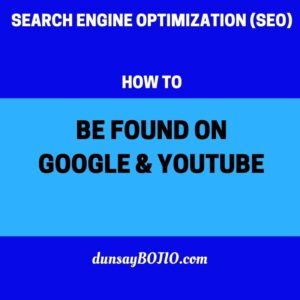I’m going to break it down for you: How to Create SEO friendly website, as it isn’t just about cramming keywords into your content pages or posts. It’s about marrying SEO with user experience to satisfy not only search engines but, more importantly, the people who visit your site.
Before you jump into the nuts and bolts of technical SEO, start by setting clear, user-focused goals. What purpose does your site serve? Who is it for? Every decision you make should be aimed at creating value for your visitors.

Keyword Research For SEO Friendly Website
Now, keyword research is your secret weapon. It’s how you get into the minds of your users. Don’t just look for popular terms; consider the intent behind the searches. Are users looking to buy, to learn, or just to browse? This insight is invaluable.
The CMS you choose can make or break your site’s SEO potential. Opt for a platform that simplifies the process of managing and optimizing your content. WordPress, for example, is a fan favorite for its user-friendly interface and robust SEO plugins.
Here’s the strategy I like to leverage: Implement a website structure that’s straightforward and simple to navigate. Think of your site as a book; it should have a clear table of contents in the form of menus and submenus that users—and search engines—can follow with ease.
SEO Friendly Website: Optimizing Content for Users and Search Engines
I’m going to show you how to strike the perfect balance between writing for your readers and appealing to search engines. Let’s face it, if your content doesn’t resonate with your audience, it’s missing the mark.
This isn’t just about stuffing articles with keywords; it’s also about crafting stories that engage. You want your visitors to hang onto every word and search engines to recognize the value you’re providing.
You’re going to find out about using headers to break your content into digestible pieces. Think of them as signposts that guide readers and search engines through your content.
I’m here to help you understand how multimedia elements can enhance your reader’s experience. This can include images, videos, or interactive elements that make your content more appealing.
Regular updates to your content ensure that it stays on the radar not just for your audience but also for search engines that prioritize fresh, relevant material.
Advancing Website Authority and Trustworthiness
If you want to stand out in the vast sea of online content, it’s crucial to not just focus on SEO techniques, but also on building up your website’s authority and trustworthiness. These elements are often undervalued, but they can make a significant difference.
Secure your website with HTTPS – it’s not only essential for protecting user data but it also signals to your visitors that you take security seriously. This often-overlooked aspect is actually a ranking factor for search engines.
Building a reputable backlink profile isn’t about quantity but quality. One backlink from a well-respected site is worth more than dozens from questionable sources. It’s about creating a network of trust that both users and search engines will notice.
Engaging with your audience isn’t a one-time task, it’s a continuous effort. Whether through comments, forums, or social media, creating a two-way dialogue encourages trust and keeps users coming back for more.
Expertise isn’t just for showing off. By providing detailed analysis and insights from knowledgeable contributors, you’re proving to users—and to search engines—that your content is authoritative and reliable.
Lastly, don’t just set your SEO strategy and forget it. Use analytics tools to monitor how users are interacting with your site. From there, adapt and refine your strategies to ensure that you’re not only meeting but exceeding user needs and expectations.

